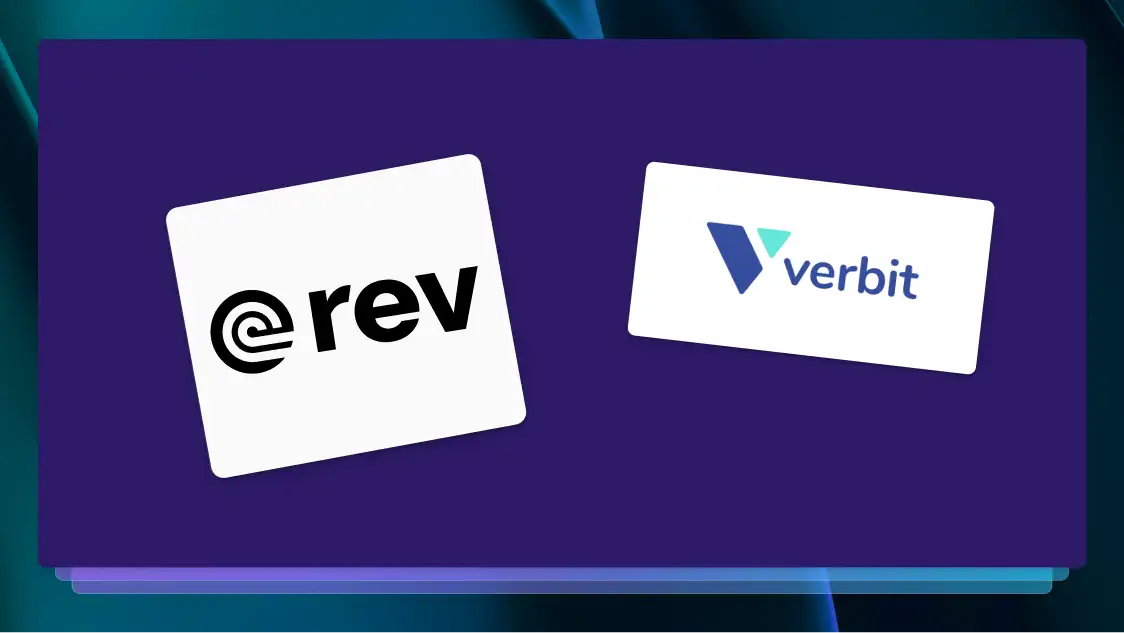Advantages and Disadvantages of Speech Recognition Software
Explore the pros and cons of speech recognition software. Understand where voice-to-text tools excel and what challenges they face with this guide from Rev.

Productivity-minded managers always look for ways to improve speed and accuracy throughout their organizations. To truly optimize workflow, all elements must be in sync. Success promises time savings, employee satisfaction and enhanced profitability.
History of Speech-to-Text Software
Computerized speech recognition first appeared in 1952. Audrey was a Bell Labs system capable of understanding single digits. IBM’s Shoebox arrived a decade later. Its vocabulary was 16 English words. In the 1970s, Carnegie Mellon’s Harpy could understand more than a thousand words.
Today, extraordinary computing power and the Cloud take expert speech transcription to new heights. Global communities of talented transcribers deliver accurate results without delay. Specialized transcription services even use artificial intelligence (AI) to improve results.
Speech Recognition Software: Pros and Cons
Pros
Regular speech recognition software comes with advantages and disadvantages. It’s all about using the right tool for the task. Sometimes, traditional speech recognition software is the best option. For example, it is convenient to have it installed right on your computer. Such software integrates with your other programs. Accuracy often improves as a given user works with it, and the software learns.
Cons
There are limitations to speech recognition software. It does not always work across all operating systems. Noisy environments, accents and multiple speakers may degrade results. Also, regular voice recognition software can lack integration with other key services.
There are also accuracy issues with most speech recognition software. Even the most accurate speech-to-text software solutions are only about 80%-85% accurate. Transcripts written by human professionals, by contrast, are about 99% accurate.
Full-Service Speech-to-Text Companies
By comparison, professional transcription is often superior. It delivers higher levels of accuracy, speed, flexibility and integration.
Accuracy
For most speech-to-text projects, accuracy is the most important variable. Regular speech recognition software does not always deliver the desired results. Inaccuracies confuse the reader. Manual revisions are costly and time-consuming. Advanced automated transcription is an alternative. It delivers accuracy when basic text-to-speech software does not.
Human transcription services come into play when precision is a must. Professional transcription copes with over-talk, excessive background noise or accented dialogue. You might need verbatim transcripts with the ums and ahs removed. Or, you might require seminar transcripts that remove small talk. Human-powered transcription is so effective that some providers offer a 99 percent accuracy guarantee.
Speed
Top-rated services employ proprietary online ASR to deliver results in minutes. Or, choose human transcription. Simply share a URL with a professional transcription service. Text files are often complete within hours.
Human transcribers often bring advanced capabilities and skill sets to their work. They may know multiple foreign languages, for example. Or, they may understand complex formatting requirements unique to certain industries.
Flexibility
Specialized services offer a more complete menu of services. Advanced speech-to-text platforms may offer apps and free tools that further improve productivity.
Integrations
Regular voice recognition software doesn’t always integrate with all operating systems. Comprehensive speech-to-text services expand the distribution of audio and video content.
They deliver online integrations that improve workflow in many ways. It is possible to integrate captions, subtitles and transcriptions from social media platforms. Order straight from Dropbox folders. Expand your audience with foreign-language subtitles. Add captions to Vimeo videos. Include real-time captioning with Zoom meetings. Advanced YouTube video-to-text services also save time and money.
Conclusion
At Rev.com, we offer a best-in-class speech engine along with accuracy guarantees. AI and communities of freelancers combine to deliver cost-saving speech-to-text services. Handle multiple speakers, diverse accents and/or background noise with ease. Enjoy real peace-of-mind. Learn more with our Speech-to-Text buyers guide.















